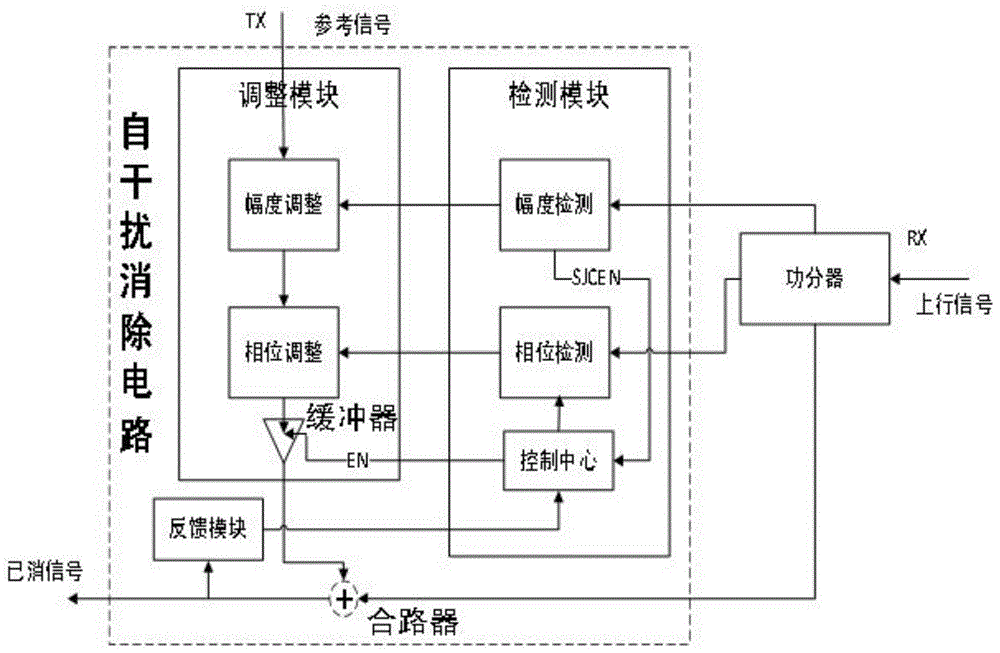Self-interference canceling circuit
A self-interference elimination and circuit technology, which is applied in the direction of electrical components, recording carriers used by machines, instruments, etc., can solve the problems of limited number of tags, short reading and writing distance of electronic tags, and low receiving sensitivity of passive RFID systems, and achieve improved The effect of receiving sensitivity, increasing the number of tags, and strengthening the ability to read and write
- Summary
- Abstract
- Description
- Claims
- Application Information
AI Technical Summary
Problems solved by technology
Method used
Image
Examples
Embodiment Construction
[0039] Embodiments of the present invention will be further described in detail below in conjunction with the accompanying drawings and examples. The following examples are used to illustrate the present invention, but should not be used to limit the scope of the present invention.
[0040] like figure 1As shown, the traditional full-scale method of self-interference cancellation does not estimate the size of the uplink signal. The system just adds a fixed-sized cancellation signal to the uplink signal. The cancellation signal is adjusted and reversed according to a part of the downlink signal. formed after phase adjustment. This kind of self-interference cancellation circuit, no matter how big the self-interference signal is, the self-interference cancellation circuit can only eliminate the self-interference signal of a fixed size, it can only suppress the carrier leakage signal with relatively stable amplitude and phase, and cannot suppress the signal parameters at all. Th...
PUM
 Login to View More
Login to View More Abstract
Description
Claims
Application Information
 Login to View More
Login to View More - Generate Ideas
- Intellectual Property
- Life Sciences
- Materials
- Tech Scout
- Unparalleled Data Quality
- Higher Quality Content
- 60% Fewer Hallucinations
Browse by: Latest US Patents, China's latest patents, Technical Efficacy Thesaurus, Application Domain, Technology Topic, Popular Technical Reports.
© 2025 PatSnap. All rights reserved.Legal|Privacy policy|Modern Slavery Act Transparency Statement|Sitemap|About US| Contact US: help@patsnap.com



